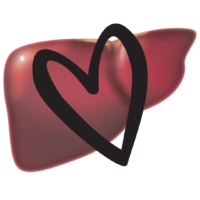Menopause vs. perimenopause
Menopause is here when you go 12 months without a menstrual cycle and is only that one day. But what about perimenopause? The average age of natural menopause is around 51. I was close at 50.5. My last period was February 14th of the prior year, which made it easy to remember. I’m three years in and loving it. I celebrated it. The tough part was five years earlier when perimenopause struck. Post-menopause is easy.
Even though the signs and symptoms of perimenopause can be challenging to pinpoint and deal with, they are the best indicator that you are in perimenopause. So, what is perimenopause? Peri- marks the start of your transition. For some, it is barely noticeable, and for others, it can be debilitating. The change usually starts with irregular periods, mood and sleep disturbances, and those legendary hot flashes. Normal peri- signs can appear as early as ten years before your final menses, but for most women, it is around 5-6 years prior.
Hormones and a regular cycle
To understand what is going on with perimenopause, we need to understand a monthly menstrual cycle. We have several hormones that control our femaleness and fertility. You can see their normal levels in the following illustration. Menses starts our follicular phase, and ovulation starts the luteal phase. If the egg isn’t fertilized at the end of the luteal phase, we start all over again.

Here are some of the hormones involved and their basic function:
- Estrogen – Estrogen typically peaks before ovulation from the follicles during the follicular phase, and then again after during the luteal phase from the corpus luteum.
- Progesterone – After the egg is released, the corpus luteum produces progesterone, a calming and heat-producing hormone, to counterbalance estrogen. Along with the estrogen in the luteal phase, it readies us for a fertilized egg.
- Testosterone – Yes, we have it. It is produced during the follicular phase and helps get your libido revved up—more about the T another day.
- Follicle-stimulating hormone (FSH) – It is created in the pituitary gland at the base of our brain after estrogen and progesterone drop, and our period starts. It stimulates up to a dozen follicles (a little sac with one egg) from our ovaries to get in the game.
- Luteinizing hormone (LH) – LH Is released towards the end of the follicular phase causing one follicle to dominate and be released to head down the fallopian tube and become the corpus luteum.
Hormones and perimenopause
The first signs of the hormonal changes occur when your cycles begin to change. During perimenopause, we start to produce less progesterone, so our cycles shorten. The number of our quality follicles drops, which can reduce our estradiol production. After this, your periods can become erratic, with months skipped entirely if no follicles mature. In response to low estrogen, your FSH elevates, causing more follicles to be released, increasing your estrogen levels. The swings of low and high estrogen can lead to wacky symptoms.
There is no definitive test for starting “the change.” You can test your follicle-stimulating hormone level at the beginning of your cycle. Doctors may tell you a high level indicates you are in perimenopause since your FSH should peak when you ovulate mid-cycle, not during menses. Elevated FSH is your body trying to compensate for fluctuating estrogen levels. Your cycle may shift by a week or more and become erratic. Eventually, the shortened periods become sporadic, and then one year without a period, and you are done. Your progesterone is low and will never be high again, but you continue to produce some estrogen. The wild swings are over, at least, which reduces the symptoms.
Symptoms of perimenopause
Besides the rise in FSH and the shortened or erratic cycles, specific fluctuations in hormones lead to particular symptoms. All women experience these differently. Some skip them altogether. Lucky them. High estrogen can lead to breast tenderness, headaches, increased lubrication, and higher sex drive. Low estrogen can lead to painful sex and no lubrication. The fluctuation of estrogen is what brings us hot flashes and night sweats.
The non-specific symptoms of perimenopause are numerous and can include increased mid-body weight gain, erratic or overemotional responses, sleep issues (cannot fall asleep or cannot stay asleep), brain fog or forgetfulness, taking things too personally, feeling like your kids or partner are aliens, a shortened fuse, starting crazy diets, drinking alcohol required nightly … OK, some of those may have just been mine, but you get the picture.
If you have any signs and symptoms that are causing you distress, you can do something about it. Anyone can. It takes education, investigation, decision-making, and commitment. Hang around, and we will get you through it. Need some resources? Check out the Menopause Macros Facebook Page and sources.





